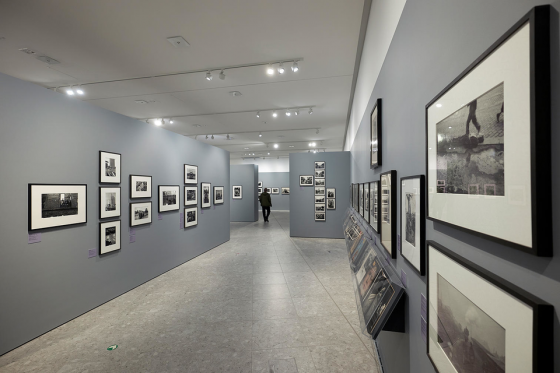
ERNST LEITZ MUSEUM: Museum for Photography and Photographic Technology
The ERNST LEITZ MUSEUM is being developed into a central cultural institution of national and international importance where the public can discover the many different facets of photography. The focus will be on researching and communicating to the public the past, present, and future of modern photography.
As both a company museum and a photography museum, the ERNST LEITZ MUSEUM will draw on scholarly expertise to undertake wide-ranging activities including photography exhibitions as well as projects relating to the company’s history or technological aspects of photography. It will take up interesting questions relevant to photography while referencing current discourses on photographic themes. Building on its work as a vibrant, future-oriented institution, the museum will strive to steadily expand the circle of people interested in and committed to photography. Accordingly, it will present exhibitions that allow visitors to experience photography in different ways. The initiator and main sponsor of the ERNST LEITZ MUSEUM is Leica Camera AG Wetzlar.
Dr. Paul Wolff & Tritschler. Light and Shadow – Photographs from 1920 to 1950
The ERNST LEITZ MUSEUM will be showing the opening exhibition “Dr. Paul Wolff & Tritschler. Light and Shadow – Photographs from 1920 to 1950“ from 28 June 2019 until 26 January 2020. With this first major retrospective devoted to Dr. Paul Wolff (1887–1951) and Alfred Tritschler (1905–1970), curated by Hans-Michael Koetzle, the public now has a chance to rediscover two of the best-known German photographers circa 1930. Dr. Paul Wolff & Tritschler are known today in photography circles mainly as pioneers in the use of the Leica camera.
Outstanding technicians, they introduced a livelier style to illustrative photography and reportage made possible by the new small format. At the same time, their work, estimated at some 700,000 photos, provides a window onto several chapters of German history: from the fall of the empire to the failed Weimar Republic, from National Socialism to the Second World War, the final phase of which saw the destruction of major parts of the Wolff archives. Active from the mid-1920s onwards, the photographers recorded practically all the important events of their day – motorway construction, the airship craze, tourism, cruises, modern architecture, industrialization, the 1936 Olympic Games. In the years around 1930, Dr. Paul Wolff & Tritschler were a veritable international phenomenon. And yet the work of Wolff and Tritschler is marked by a number of contradictions. A historical-critical examination of their work was more than overdue.
Opening hours:
Tuesday-Sunday
10:00 to 18:00 o’clock
Admission: 9 EUR
Via Reddotforum














